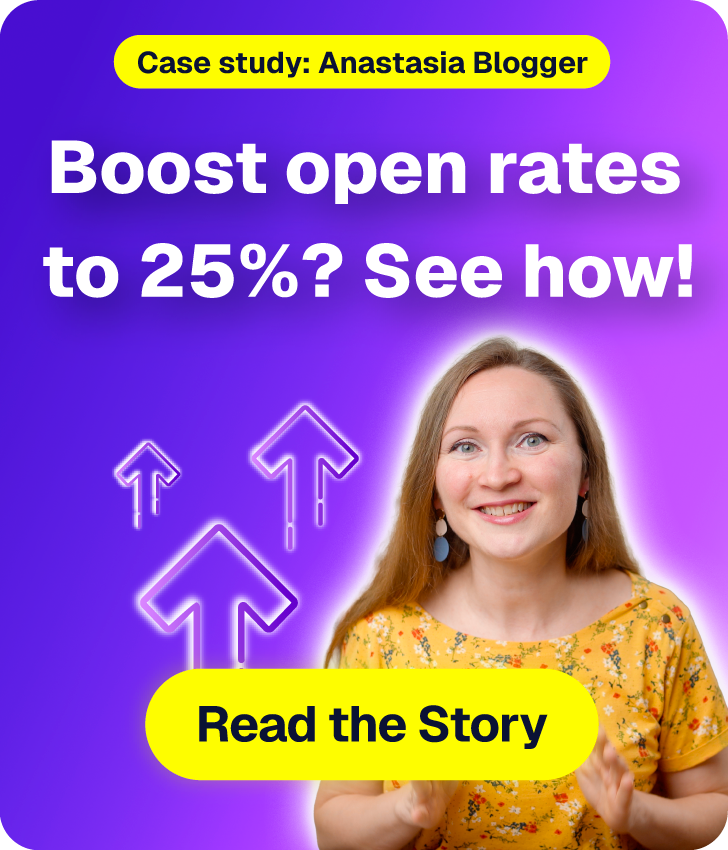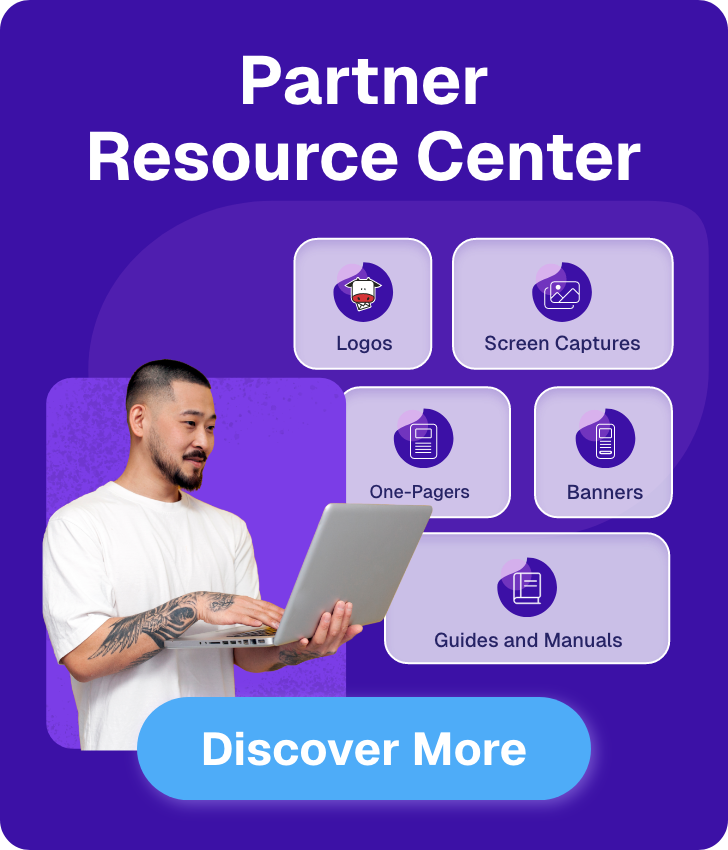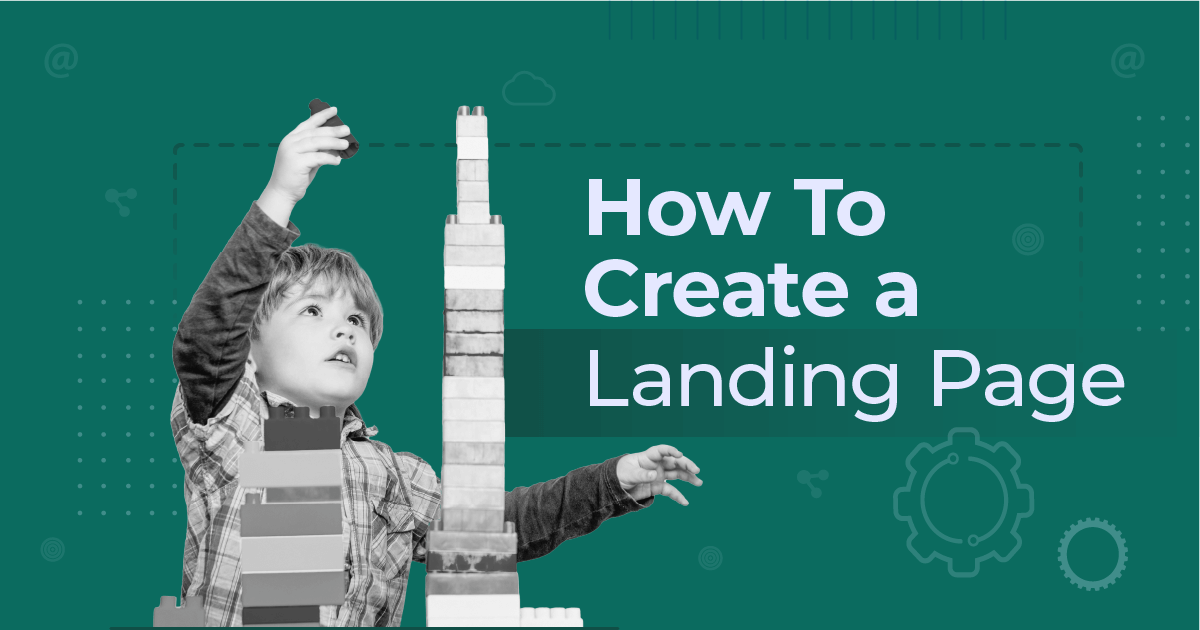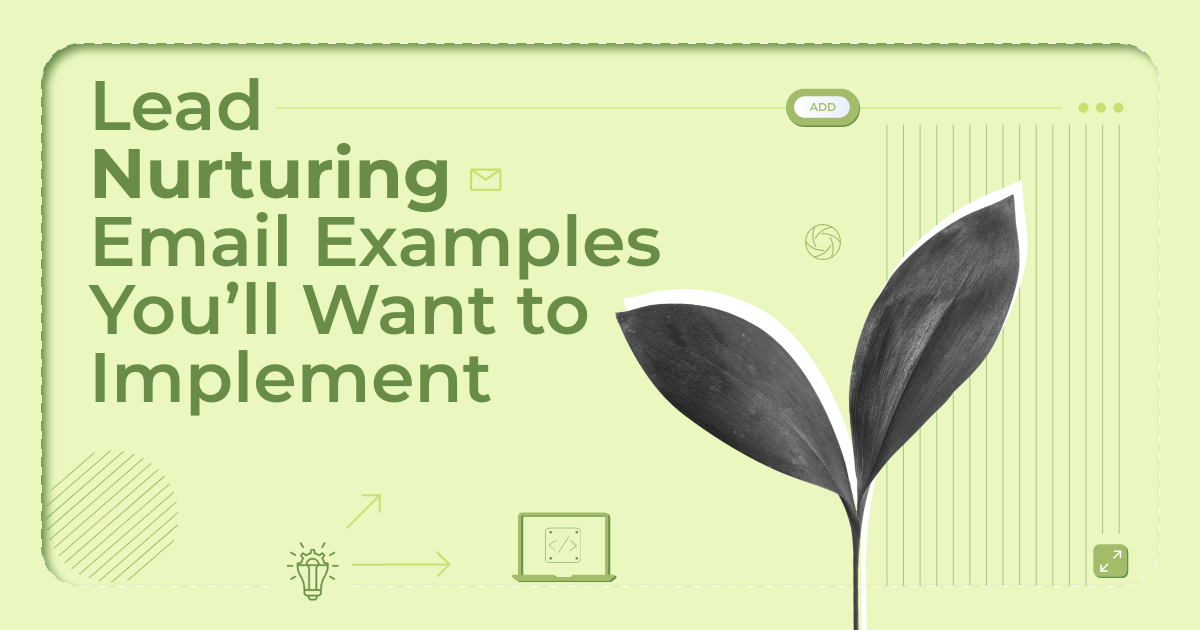
Email Marketing Lead Generation: 5 Steps For Success
Email marketing lead generation is a powerful strategy, but success isn’t just about building the biggest list. Many businesses turn to lead magnets—like discounts or free ebooks—to attract new subscribers, and while these tactics can be effective, they don’t always bring in the right audience. Some people sign up just for the freebie without any real interest in your brand, making it harder to nurture meaningful customer relationships.
Think of it like a blogger stuffing articles with trending keywords. They might see a short-term boost in search rankings, but if the content isn’t valuable, readers won’t stick around. Similarly, a news website using clickbait headlines may drive traffic, but if the articles don’t deliver, visitors will quickly lose trust. The same applies to email marketing—getting people on your list is just the first step. To truly drive conversions, it’s important to attract engaged subscribers who see real value in what you offer.
By focusing on quality over quantity and continuously delivering relevant content, you can build an email list that not only grows but also converts in the long run.
In this blog post, we’ll walk you through a series of actionable steps to help you:
- Attract the right audience.
- Deliver valuable content that keeps leads engaged.
- Use automation and segmentation to nurture leads over time.
- Combine email with other marketing channels to expand your reach.
By the end, you’ll have a clear roadmap for generating high-quality leads with email marketing. Let’s dive in.
Struggling to generate quality leads?
Get powerful popups and easy-to-implement automation tools.
Try MoosendStep 1: Define and Attract the Right Audience
Successful email marketing lead generation isn’t just about collecting emails—it’s about attracting the right people who are genuinely interested in your business. Many companies prioritize volume over relevance, which leads to a disengaged list that may never convert. The goal is to focus on qualified leads, ensuring that every new subscriber has real potential to become a customer.
Why Targeting Matters
Imagine you run a video game company and decide to host a giveaway for a luxury watch. While you may gain thousands of email signups, most of those participants aren’t interested in your games—they’re after the prize. Once the contest is over, most of them will likely unsubscribe or ignore your emails. Instead, offering a game-related incentive (like an exclusive in-game item or beta access) ensures that the people signing up are actually your target audience.
How to Attract the Right Audience
To build a high-quality email list, you need to offer something valuable that directly aligns with your business. Here are a few ways to do that:
- Lead Magnets: A lead magnet should attract people who are already interested in your product or service. Instead of generic freebies, offer resources that connect to what you sell, such as industry reports, in-depth guides, or exclusive trials.
- Engaging Signup Forms: The way you capture emails matters. Instead of passive signup forms, use strategic popups, embedded forms, and landing pages tailored to your audience. Forms should be short and compelling, with clear benefits for signing up.
Step 2: Deliver Value Through Email Content
Once you’ve attracted the right audience, the next challenge is keeping them engaged. To turn subscribers into actual leads, your emails need to provide ongoing value—educating, entertaining, or helping them solve a problem.
New subscribers aren’t ready to buy immediately. They need time to trust your brand, understand your offering, and see its value. Consistently providing useful content builds credibility and strengthens their connection to your business. Without this step, even the most qualified leads may lose interest before they reach the decision stage.
Types of Valuable Email Content
The key to nurturing leads is sending content that aligns with their interests and stage in the buyer’s journey. Here are some email content ideas that keep leads engaged:
- Educational Content: Share industry insights, tutorials, or expert tips that help solve a problem. For example, a marketing software company could send a guide on increasing email open rates.
- Exclusive Insights & Resources: Provide value beyond what’s available on your website, such as insider reports, customer success stories, or case studies.
- Product Recommendations: Use personalized email content to suggest products or services based on past behavior or interests.
- Interactive Elements: Quizzes, surveys, and engagement-driven emails (such as “What’s your biggest challenge?”) encourage responses and make the experience more personal.
Segmentation: Deliver the Right Content to the Right People
Not every lead is the same. Some may be in the awareness stage, while others are closer to making a purchase. Instead of sending generic emails, segmenting your audience allows you to deliver content tailored to their journey—but how do you do this when subscribers are new?
Initially, segmentation starts with signup source data. For example, if a subscriber downloaded an industry report, they’re likely interested in educational content, while someone who signed up for a free trial might need product onboarding emails.
Over time, as subscribers interact with your emails, you can refine segmentation based on:
- Engagement Level – Have they opened past emails? Clicked on links?
- Behavior & Interests – What products, pages, or blog posts have they engaged with?
By tracking these behaviors, you can send relevant follow-ups, increasing engagement and moving leads closer to conversion.
Step 3: Use Email Automation to Nurture Leads
In the previous step, we saw that it’s vital to follow up leads with useful content. In this step, we’ll see how you need to plan that content and automate the whole process.
Email automation ensures you don’t need to follow up with every lead manually. By setting up automated email sequences, you can keep leads engaged, move them through the sales funnel, and ensure no potential customer is forgotten.
Setting up your automations beforehand will allow you to nurture leads on autopilot, sending relevant content to each subscriber at the right time.
Key Automated Sequences to Set Up for Lead Nurturing
One key email sequence you can set up is a welcome sequence. With this, you introduce new subscribers to your brand and set expectations for future emails. Welcome emails have high open rates, so they matter. In these sequences, you can deliver valuable resources such as a popular blog post, checklist, or free demo. Your welcome emails can also be linked with more extensive drip campaigns, which are series of emails sent over time to build interest. They gradually educate leads about your product or service.
To send timely communication that feels natural and personal, you can also use behavior-based automation. For example, if a visitor downloads an industry report, you can deliver an automated follow-up with a thank you email plus an additional relevant blog post. On day 3, there can be an email with deeper insights. On day 7, you could send a customer success story demonstrating how others have benefited from applying those insights. Finally, on day 10, the lead will be encouraged to explore your offering through a soft product introduction.
Apart from the above, you can also set up re-engagement campaigns. In your email marketing platform, identify subscribers who haven’t opened your emails in a while and send an exclusive offer, a reminder, or resource. This way, you can reduce churn and keep your list engaged.
It’s important to make a plan and set up these key automations before you start generating leads. Otherwise, it will be hard to keep track of and segment them later.
Email Software Features That Enhance Lead Nurturing
To nurture leads effectively, you need an email marketing tool that provides certain automation capabilities. Here’s what to look for:
- Dynamic Content Personalization: You can customize the email content based on subscriber data (e.g., demographics or preferences during signup).
- Behavior-Based Automation: Deliver emails based on visitor/subscriber actions (signups, links clicked, downloads, etc.)
- Lead Scoring: Sort and categorize leads based on their engagement levels. For example, a lead who opens an email but doesn’t click on anything will get a lower score than one who engages with the campaign.)
- A/B Testing: Experiment with different subject lines, email content, and CTAs to improve engagement. A/B testing is an essential tool to understand what resonates with your audience optimize your future emails.
Step 4: Measure & Optimize Lead Engagement
Email lead nurturing isn’t a set-it-and-forget-it process. While automation helps guide leads through the funnel, your initial assumptions about what they’ll engage with may not always be accurate. That’s why tracking engagement and adjusting your strategy based on real data is essential.
For example, you may assume that subscribers who download an ebook on email marketing will also be interested in a related industry report. However, after reviewing your data, you notice that only a small percentage actually clicks on the report link. This signals that the resource may not be as relevant as expected, and you might need to replace it with a more engaging offer.
Key Email Metrics You Should Track
Understanding how leads interact with your emails helps you refine your approach. Let’s see the most important metrics you should track:
- Open Rate – Shows how many recipients open your emails. A low open rate could indicate poor subject lines or bad timing.
- Click-Through Rate (CTR) – Tracks how many subscribers click on links in your emails, indicating interest.
- Conversion Rate – The percentage of leads who complete a desired action (e.g., sign up for a webinar, purchase a product.)
- Bounce Rate – Indicates how many emails failed to reach the inbox. High bounce rates may suggest list hygiene issues.
- Unsubscribe Rate – Helps assess whether your content is valuable or leads are losing interest.
How to Identify and Nurture Cold Leads
Some leads may lose interest over time, while others might be waiting for the right moment to convert. Instead of sticking to a rigid email flow, use engagement data to optimize your approach. Here are a few ways you can handle disengaged leads:
- Segment cold leads: Separate subscribers who haven’t opened or clicked an email in the past 60-90 days.
- Test new subject lines and CTAs: If engagement remains low, experiment with different messaging or incentives.
- Remove unresponsive leads: To maintain a healthy email list, suppress leads who haven’t interacted in months.
By analyzing engagement and making data-driven optimizations, you can ensure that your email marketing efforts consistently generate and convert high-quality leads.
Step 5: Combine Email with Other Lead Generation Channels
To maximize email marketing lead generation, businesses should use multiple touchpoints to attract, nurture, and convert leads. By integrating email with other marketing efforts, you can reach more qualified prospects and keep them engaged throughout their journey.
Grow Your List with Social Media
One of the most effective strategies is using lead generation ads, which let users sign up for your email list without leaving their feed. Add compelling copy and incentives, such as an exclusive discount or a free industry report, to encourage signups.
Another great strategy is to promote exclusive content that requires an email address to access. If your brand offers downloadable guides or templates, share them on your social channels with a call-to-action that directs users to a signup form. This way, you attract people who are genuinely interested in your content and more likely to engage with future email campaigns.
Social media contests can also generate leads, but they need to be targeted. Make sure the contest prize is directly relevant to your brand.
Optimize Website Forms & Popups
Your website is a great place to capture leads as long as you avoid generic forms. Instead, use smart popups and embedded forms tailored to visitor behavior. You can set up exit-intent popups that appear when users are about to leave. By providing an incentive (free trial, coupon), you’re more likely to gain those leads.
Timing and placement also matter. Popups that trigger too early can be annoying, while those appearing after engagement—such as scrolling 50% down a page—feel more natural. Embedded forms in high-traffic areas (blog posts, footers, sidebars) maximize visibility.
Generally, we recommend keeping your forms short and clear. The less form fields you have, the less friction there will be. Finally, you can test different form placements (e.g., sidebar, footer, in-content) to see what converts best.
Use Retargeting Ads to Re-Engage Visitors
Many visitors leave your website without subscribing. With retargeting ads, you can bring them back. These ads appear on social media or other websites, reminding users of your brand and encouraging them to sign up.
Retargeting ads can have great results when they are tailored to user behavior. Based on what visitors view on your site, you can show personalized offers to get them back. For example, if someone browsed a product page but didn’t subscribe, show an ad offering a special incentive like a discount or free resource.
Webinars & Events as Lead Magnets
Hosting webinars or virtual events can generate highly qualified leads. They attract participants who are already interested in your industry or product, therefore more likely to convert. Require an email signup for registration and promote the event through social media, email campaigns, and website popups.
Make sure your webinar delivers valuable insights and encourages interaction to build trust. After the event, follow up with personalized emails, such as a recap, exclusive resources, or a special offer.
Don’t forget to segment attendees based on engagement. Those who asked questions or stayed until the end can be your high-intent leads and are worth prioritizing.
Generating Leads is About Long-Term Engagement
Following these steps and experimenting with segmentation and automation will help your business attract, nurture and convert leads effectively. It’s also vital that you monitor your email metrics and optimize your approach.
If you want a tool that can help with all the above steps, like generating leads, managing your list, and automating follow-ups, you can try Moosend with a free account.
Frequently Asked Questions
1. What is email marketing lead generation?
Email lead generation is the process of acquiring leads or potential customers through an email opt-in form. It involves gathering information on potential customers, such as their names and email address.
But a proper email lead generation strategy doesn’t stop there. It’s all about nurturing those leads to ultimately convert them into paying customers.
2. What are the benefits of email marketing lead generation?
Email marketing lead generation helps businesses attract and nurture high-quality leads, leading to long-term customer relationships. Key benefits include:
- Cost-effectiveness: Lower acquisition costs compared to paid ads.
- Highly targeted: Reach the right audience with segmentation.
- Automated nurturing: Keep leads engaged with email sequences.
- Higher conversions: Personalized emails can drive more sales.





 Published by
Published by
